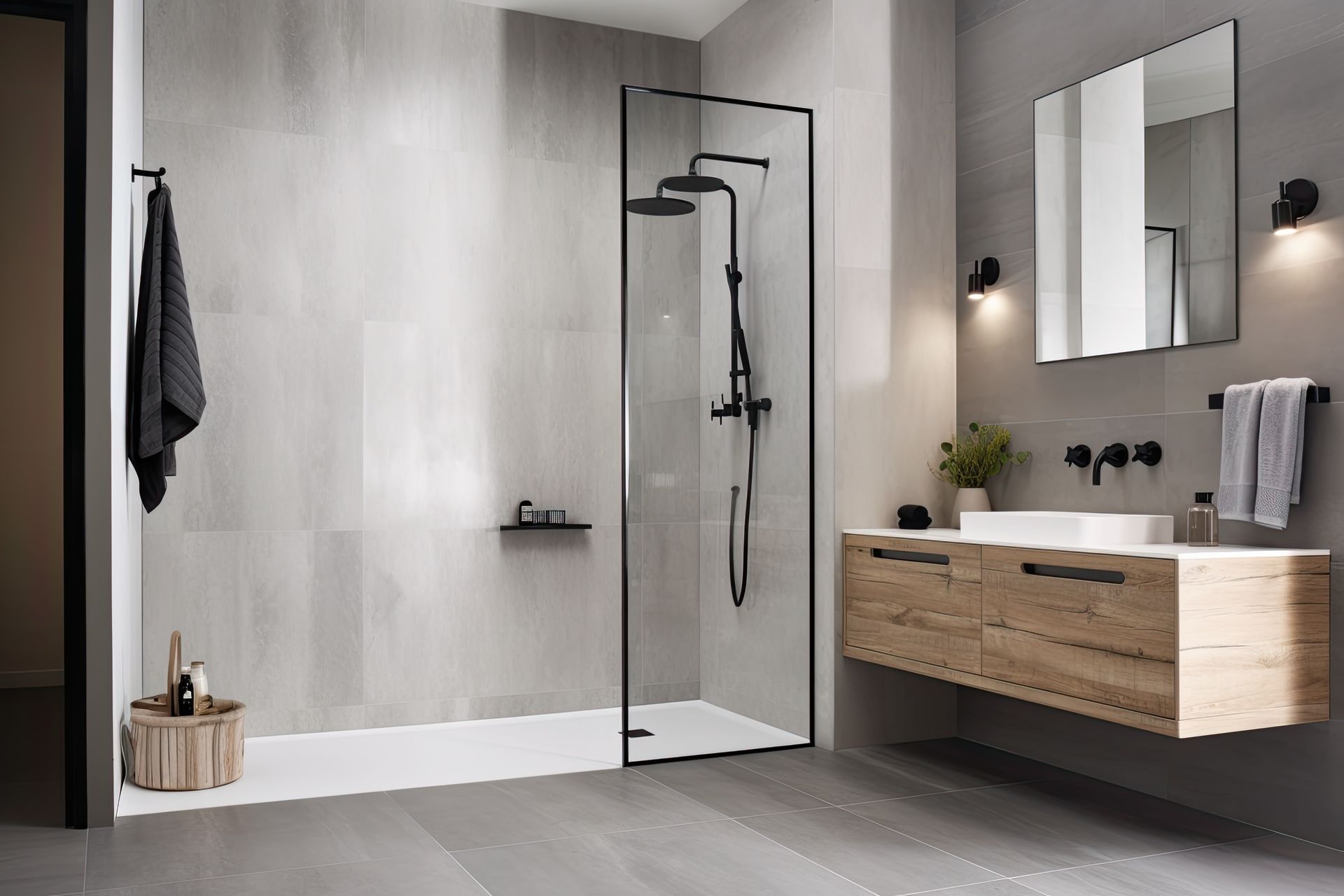Accessibility Matters: Designing Bathrooms for All
The beauty and functionality of a bathroom should not be limited by physical abilities. As our understanding of inclusivity and diversity grows, so does our appreciation for accessible design. Whether you're caring for an aging loved one, accommodating a family member with special needs, or planning for the future, ensuring that your bathroom is accessible to all is not just considerate, it’s crucial.
Let's delve into the importance of designing bathrooms with everyone in mind and explore some practical suggestions to achieve it.
The Importance of Accessible Bathrooms

- Promoting Independence: A thoughtfully designed bathroom can empower individuals with disabilities, allowing them to carry out their routines independently. When you reduce obstacles and risks, you foster self-reliance and confidence.
- Safety First: Falls in the bathroom are common among seniors and individuals with mobility issues. Slippery surfaces, high thresholds, and hard-to-reach fixtures can be hazards. An accessible design prioritizes safety, reducing the risks associated with these common bathroom features.
- Future-Proofing: Our needs change as we age. Designing a bathroom that's accessible ensures that your home can adapt with you, avoiding costly renovations down the line.
- Inclusivity: An accessible bathroom ensures that everyone, regardless of their physical abilities, feels welcome and accommodated in your home.
Key Features of an Accessible Bathroom
- Barrier-Free Showers: Traditional bathtubs can be challenging to enter and exit. Barrier-free or roll-in showers eliminate the need to step over a high threshold. They come with a gentle slope to drain water and are often accompanied by non-slip tiles, reducing the risk of falls.
- Grab Bars: Strategically placed grab bars around the bathroom — especially near the toilet and shower — offer support. These bars need to be sturdy and installed correctly, bearing weight without any give.
- Lever Faucets and Anti-Scalding Devices: Lever faucets are easier to operate than twist knobs, especially for those with limited hand mobility. Integrating anti-scalding devices ensures that water temperature remains safe, protecting the user from sudden temperature spikes.
- Raised Toilets: Toilets with higher seating can make the process of sitting down and standing up easier, especially for those with knee or back issues.
- Wider Doorways: A wider doorway can accommodate wheelchairs and walkers, ensuring easy ingress and egress.
- Accessible Storage: Think about the height and operation of storage solutions. Pull-down shelves, open shelving, and drawers with easy-grip handles can make a world of difference.
- Clear Floor Space: Ensure there's enough maneuvering space, especially if a wheelchair needs to turn around. This might require a larger bathroom layout or efficient placement of fixtures.
Tub to Shower Conversions
Converting a bathtub to a shower is an excellent idea for anyone looking to create an accessible bathroom. While the process typically involves removing the tub and installing a barrier-free shower or walk-in tub, the result is a safer, more convenient bathing experience. Benefits of
tub to shower conversions:
- Safety: Showers offer a lower risk of slips and falls than bathtubs because they have no edges to step over.
- Accessibility: Converting tubs into showers makes them more accessible for people with mobility issues, allowing individuals to easily enter and exit without assistance.
- Convenience: Showers provide more space for relaxing and cleansing.
- Cost-effectiveness:
Bathroom renovations can be expensive, but tub to shower conversions are usually less costly than complete bathroom remodels.
Design with Aesthetics in Mind
Accessible design doesn't mean compromising on style. Modern accessible fixtures come in a variety of designs to suit any aesthetic preference. Whether you're going for a minimalist, contemporary, or traditional bathroom look, there's an accessible product out there that serves its purpose and elevates the overall design of the space.
The Role of Technology
Smart technology can further enhance bathroom accessibility:
- Voice-Activated Fixtures: These allow for hands-free operation, making tasks like adjusting water temperature or turning on lights easier.
- Sensor-Activated Faucets and Toilets: These not only reduce touchpoints but also ensure efficient use, conserving water.
- Adjustable Lighting: Being able to adjust the brightness or color temperature of bathroom lights can be helpful, especially for those with vision impairments.
Conclusion
A well-designed bathroom is one where everyone feels welcome, comfortable, and safe. By integrating accessible fixtures — and considering the role of smart technology — you can create a bathroom that's inclusive of all.
Remember, accessibility isn't just good design; it’s an essential part of making sure everyone is cared for. Whether your goal is to create a space for an aging parent, accommodate a family member with special needs, or future-proof your home, accessible bathroom design is the way to go.
Whether you're searching for a bathroom remodeling contractor in Longmeadow or bathroom remodelers in Westfield, Dave Davidson provides expert bathroom remodeling services throughout Hampden County and Hampshire County. Schedule a free consultation online or call Dave at (413) 569-9973.
